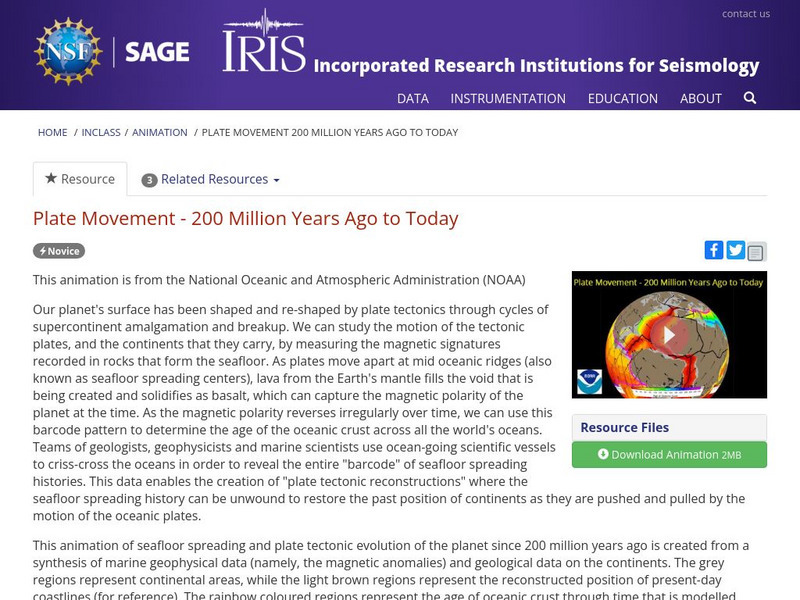Hi, what do you want to do?
PBS
The Huge Extinctions We Are Just Now Discovering
What graptolites tell us is a story of incredible changes in the ocean, of periods where the oceans became poisonous and suffocating before eventually clearing up again. They unlock extinctions and recoveries that scientists didn't see....
SciShow
These 100-Million-Year-Old Microbes Are Still Alive!
Researchers have found ancient communities of microbes that have been buried deep, for a hundred million years! This discovery might be the oldest living thing on Earth, and could even expand the search for life on other planets.
SciShow
The Carbon Impact of the World’s Largest Mass Migration
Thanks to the Monterey Bay Aquarium and their research and technology partner MBARI for partnering with us on this episode of SciShow. They worked together on an exhibition, “Into The Deep: Exploring Our Undiscovered Ocean,” to give...
SciShow
Why the Oceans Are Getting Darker
You’d never tell just by staring out from a sandy beach, but the coasts are gradually getting darker, and the effects of this darkening are only beginning to be understood.
SciShow
An Ode to Salps: Our Gelatinous Marine Cousins
Salps are more than just strange balls of goo drifting through the sea—in fact, they’re more closely related to us than they are to jellyfish, and play a huge role in marine ecosystems and the global carbon cycle as the “vacuum cleaners...
SciShow
The Carbon Impact of the World’s Largest Mass Migration
The Carbon Impact of the World’s Largest Mass Migration
SciShow
These 100-Million-Year-Old Microbes Are Still Alive!
Researchers have found ancient communities of microbes that have been buried deep, for a hundred million years! This discovery might be the oldest living thing on Earth, and could even expand the search for life on other planets.
SciShow
The Most Incredible Snowfall on Earth Occurs Deep Underwater
Deep in the ocean, fluffy bits of organic matter fall like snow. But this marine snow isn’t just pretty; it’s an essential part of our ocean food webs and our global climate!
Bizarre Beasts
How One Crab Got Fuzzy to Live Without The Sun
Yeti crabs have figured out how to live without the sun! All they need is their fuzzy arms, bacteria, and the bizarre, dark oozings of the deep.
PBS
Pbs Learning Media: Deep Sea Vents and Life's Origins
This video segment adapted from NOVA reveals the unexpectedly rich ecosystems researchers found when they looked more closely at the seafloor near mid-ocean ridges.
NOAA
Noaa: Seafloor
This resource provides photographs or video clips of the seafloor. The images are organized under the topics, geologic features, bacteria mats, hydrates and habitat. Quick Time is required.
NOAA
Noaa: Submarine Bathymetry of Pacific Ring of Fire
What would the ring of fire look like if the oceans were removed? This animation, based on data gathered during a Ring of Fire expedition reveals the numerous volcanos which make up this area.
PBS
Pbs Kids Design Squad: Underwater Robot
An oceanographic engineer at Woods Hole, Amy helps build and operate torpedo-shaped robots to map terrain under water. [1:04]
Incorporated Research Institutions for Seismology
Iris: Plate Movement 200 Million Years Ago to Today
A time-lapse animation of seafloor spreading and plate tectonic evolution of the planet since 200 million years ago. [0:22]
Science Friday Initiative
Science Friday: Expedition Explores the Arctic Sea Floor
A team of scientists is heading toward the Gakkel Ridge in the Arctic Ocean, hunting for hydrothermal vents on the Arctic sea floor. [29 mins. 30 secs.]









